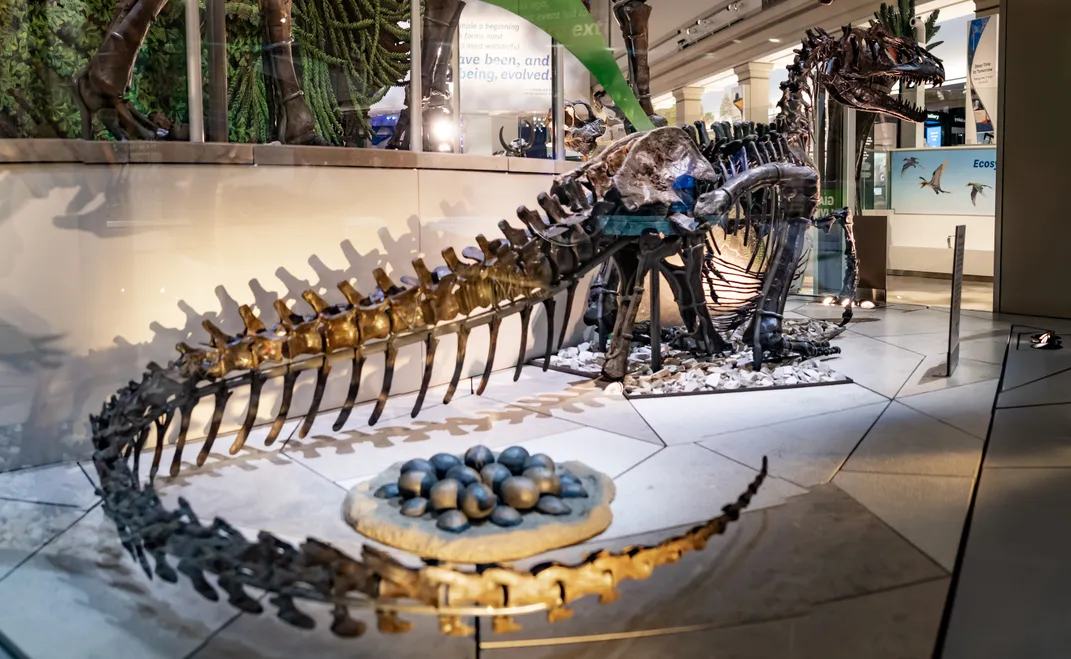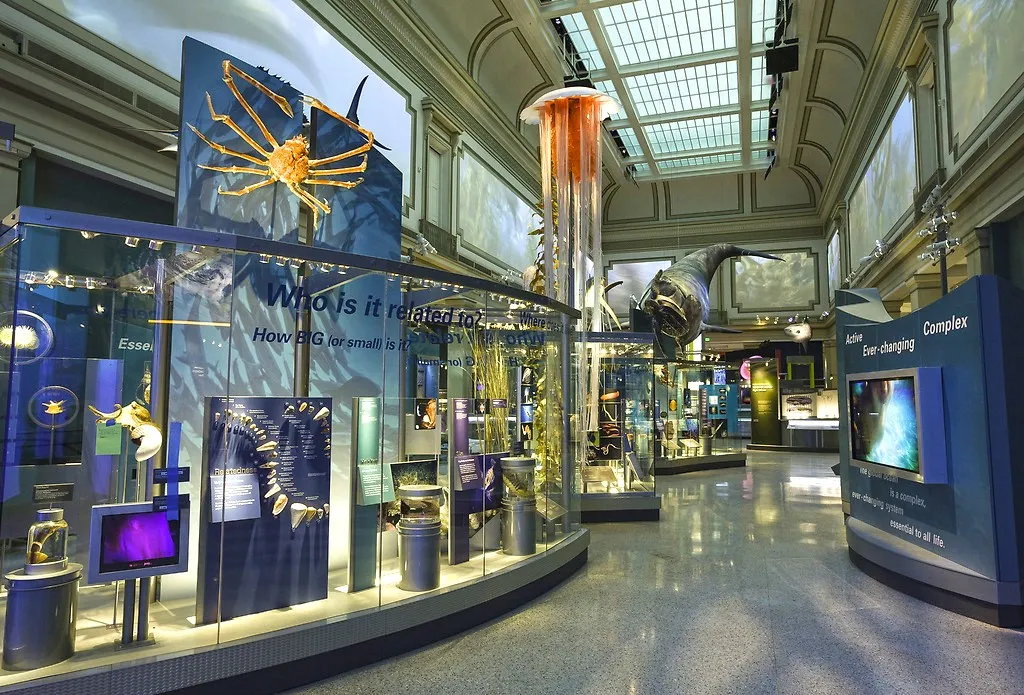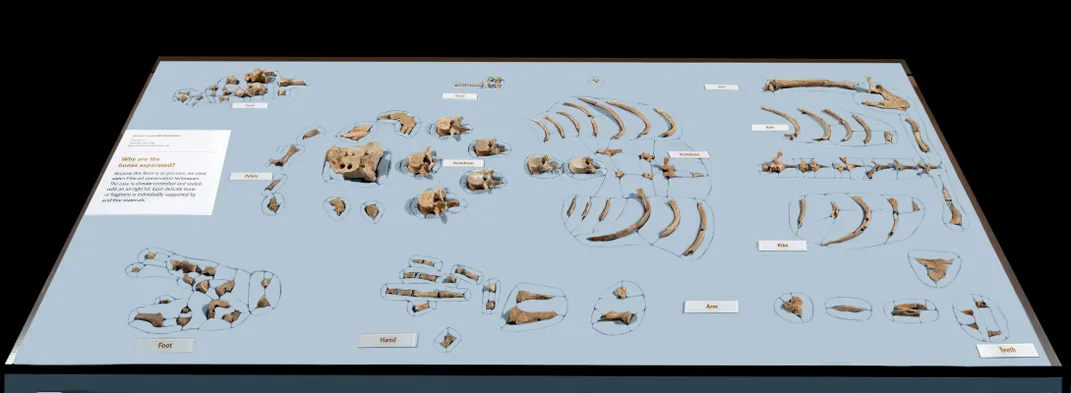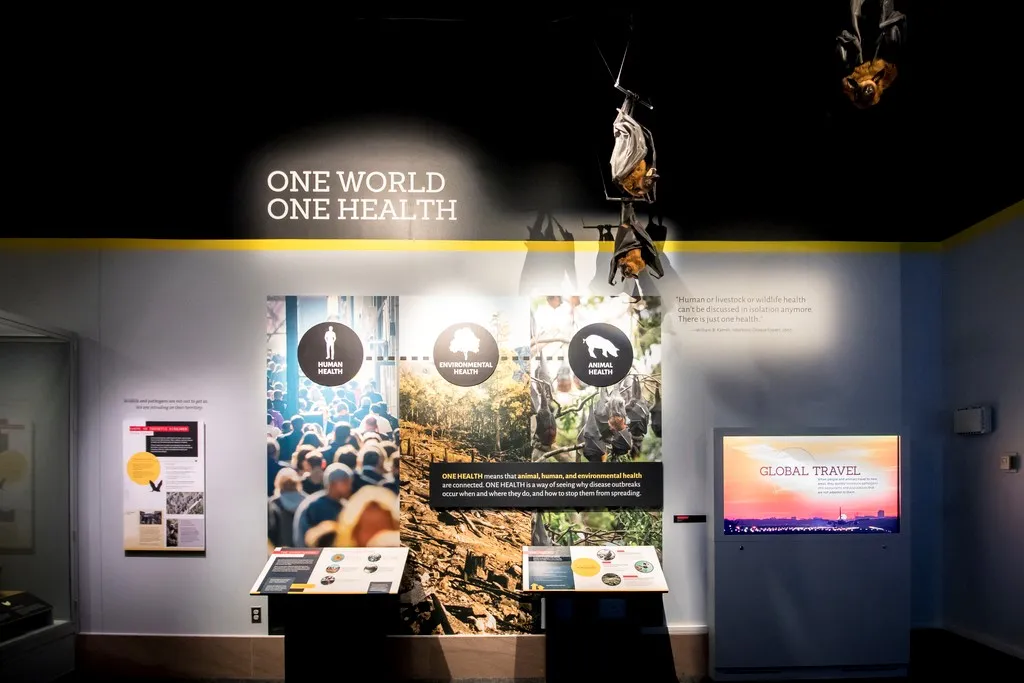NATIONAL MUSEUM OF NATURAL HISTORY
Don’t Miss These Objects When the Smithsonian’s Natural History Museum Reopens
Whether you’re a seasoned visitor or a newbie to the natural history museum, there are plenty of things for you to explore.
/https://tf-cmsv2-smithsonianmag-media.s3.amazonaws.com/blogging/featured/Giant_replica_of_a_mosquito_hangs_from_the_ceiling_in_a_museum.jpg)
With the reopening of museums across the country comes a flood of changes for many institutions, including new timed-entry passes. But these updates shouldn’t discourage you from setting foot back into museums like the Smithsonian’s National Museum of Natural History — even if you think you’ve already seen it all.
Whether you're a seasoned visitor or a newbie to the natural history museum, there are plenty of things for you to explore when the museum reopens June 18. Here are some recommendations by the museum’s exhibit project managers, including their favorite objects.
Delve into Deep Time

During reopening, visitors will enter through the National Mall and end up in the museum’s Rotunda. There, a sharp turn to the right will bring you to the “David H. Koch Hall of Fossils - Deep Time,” which has over 700 fossils on display.
With so much to see, exhibit project manager Siobhan Starrs was hard-pressed to pick her favorite. So, she picked three, including the Allosaurus fragilis fossil from over 200 million years ago.
“It embodies connected stories and histories about paleontology, museum exhibitions and our museum research and collections,” said Starrs. “The way it is posed shows how we display these fossils in ways that represent the best current scientific understanding of these amazing organisms but are also surprising, new and animated.”
Starrs is also a big fan of the hall’s “Fossils from Coal Mines” and the “Your Body Through Time” sections. Both areas were designed to show how plants, animals, people and the planet are connected and have co-evolved throughout billions of years.
Seek out the Sant Ocean Hall

If you return to the to the Rotunda, the next closest stop is the “Sant Ocean Hall.” When you dock your boat there, make sure to catch the Ocean Explorer Theater video about scientists in the deep-sea submersible called Alvin.
“The film shows you how much of the ocean is still largely unexplored and how much of it is full of amazingly diverse life,” said Jill Johnson, the exhibit’s project manager.
The theater is one of many of Johnson’s favorites in the exhibit and contributes to the hall’s overarching theme.
"The ocean is a global system essential to all life, so we want to show how important the ocean is to all life past and present,” said Johnson.
Head to Human Origins

If you dive deeper into the “Ocean Hall,” you will eventually reach the “David H. Koch Hall of Human Origins.” While the massive gallery has many sights to see, the exhibit’s project manager, Junko Chinen has several recommendations for specimens you simply cannot miss.
One is the only neanderthal skeleton on display in North America. According to Chinen, it’s sometimes called the “Hope Diamond” of human origins because of its value to anthropologists.
There are also five bronze statues of early hominids spanning species that lived from 2.5 million years ago to roughly 40,000 years ago. These statues show the evolution of people over time in response to climate change.
“Each one represents the behavior of each species. And when you look at them, each one of them has a story to tell,” said Chinen. “I love those displays because people can relate to them.”
Meander to the Mammal Hall
The “Kenneth E. Behring Family Hall of Mammals” also has objects to share with over 274 specimens and fossils. It’s easily reached through the Human Origins Hall or the Rotunda.
One peculiar and cute specimen is the pink fairy armadillo, which exhibit project manager Elizabeth Musteen recommends for several reasons.

“First, it’s pink. How many mammals in the world are pink? It’s tiny. It would fit in the palm of your hand. We think it might be extinct although scientists aren’t quite ready to call it yet,” said Musteen.
Pink fairy armadillos come from central Argentina and prefer desert climates. Like all armadillos, they have body armored plates which they use for protection by curling into a ball to obstruct predators. Because the species is so small, it can be easily missed in the Mammal Hall.
“It’s right at the front of the exhibit. So often people come in and they see the lion and the giraffe and they just breeze right past those front cases,” said Musteen. “The pink fairy armadillo kind of gets lost if you don't pay attention.”
While the armadillo is a highlight, there are also other must-see specimens.
“Look around and look up. Everybody looks straight ahead and not many people look down, where there are footprints on the floor that you can walk through,” said Musteen. “People can use all their senses, because there’s a lot of things to touch and click.”
Ogle Outbreak

Once you’ve exhausted your first-floor explorations, it’s time for a trip upstairs, where you will find “Outbreak: Epidemics in a Connected World.” While the entire exhibit is relevant right now, the project manager, Meg Rivers, has a soft spot for the entrance.
"The area called ‘One World, One Health,’ right as you walk into the exhibition from the Rotunda entrance beautifully summarizes the intimate connection between animal, human and environmental health and what happens when humans encroach into animal territories and spaces,” said Rivers.
She’s also a fan of the giant Aedes mosquito replica that hangs in the exhibit over several specimens from the National Insect Collection. The mosquito species is a vector for yellow fever.
“When do you really get to explore a life-sized mosquito collection and a replica that is 4,000 times that size while standing in one spot?” said Rivers.
Navigating your natural history museum
Whether you follow the route laid out above or decide to chart your own path around the museum’s open exhibits, there are plenty of objects to discover. Just remember to follow the new visitor policies, including securing a free, timed-entry pass, social distancing and mask wearing, to make sure your visit is safe.
Related Stories:
‘One Health’ Could Prevent the Next Coronavirus Outbreak
New App Takes Smithsonian Visitors Beyond Visuals
Smithsonian Puts Backstage Fossil Preparation Center Stage in its New Fossil Hall
Five Things You Shouldn’t Miss in the New Fossil Hall
The Experts Behind the New Fossil Hall Wrap Their Minds Around ‘Deep Time’

